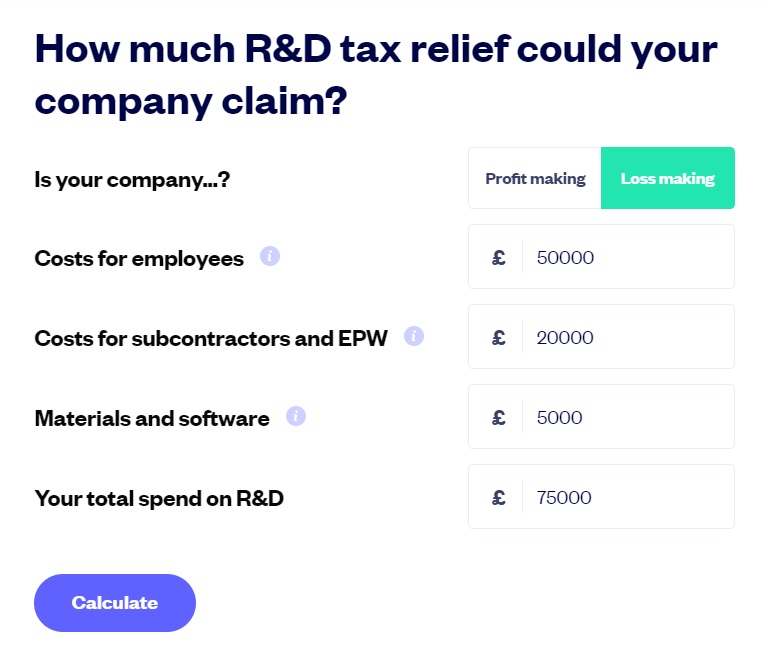R&D success stories: meet the companies claiming back cash
Meet the innovative companies who have successfully recovered money through the SeedLegals R&D Tax Credits service.
Research and Development Tax Credits are a great way to make the money raised in your last round last longer. We spoke to founders in industries ranging from technology, energy and education to furniture and found that many did not know about R&D Tax Credits and that they were eligible to claim up to 33% back on their expenses that qualify as R&D. Many also thought that R&D Tax Credits were only available to technology companies, which is a very common misconception among founders, but is certainly not true.
In this article we’ll show you how your company could qualify for claiming R&D Tax Credits and how a project qualifies as an R&D Project.
Let’s start with the fact that if your company is participating in any kind of R&D (and R&D is a very broad definition, far from being only software or deep tech), under the SME scheme for R&D Tax Credits you’re very likely eligible for claiming back up to 33% of your expenses on R&D in the form of corporation tax deduction or cash payments from HMRC.
HMRC aims to check claims within 40 days. Once your claim is approved, it will then take around one to two weeks for the money to arrive in your bank account.
The amount claimed back through the scheme, where companies claimed on average approximately £57,000 (2018-19 stats), which can then be used to grow your team, invest in technology, secure sales and do many more things you need to scale your business.
Under the SME scheme for R&D Tax Credits, you can get relief of 33% on your qualifying R&D costs if you’ve worked on projects that advance overall knowledge and capabilities in the field of science or technology and faced technical uncertainties while doing so in the last 2 years.
To qualify for the R&D Tax Credits under the SME scheme, your company must have:
If you do not meet the criteria for the SME scheme, you may be able to qualify for the Research and Development Expenditure Credit (RDEC) scheme. Larger companies who are undertaking eligible R&D activities can claim cash payments if they are loss making or a deduction in their corporation tax liability if they are profit making. However, this scheme is not as generous as the SME scheme and you can only claim back up to 13% of your qualifying R&D expenditure.
R&D Tax Credits are not just reserved for the tech industry. According to the latest statistics by ONS, in 2018-19, the industries that claimed the most amount of R&D Tax Credits were Manufacturing, Information and Communication, and Professional, Scientific and Technical sectors, which claimed 28%, 19% and 24% of the total amount respectively. These industry categories include activities such as software development, data management, advances in consulting, research, legal and accounting services, engineering etc. Other industries that have benefited greatly from the scheme are agriculture, electricity, financial and insurance, real estate, education, health and social work, public admin, defence and social services, transportation storage and many others.
So if you feel like you’ve been working on creating something unique and new to your industry, your project would most likely be an R&D project and be eligible for R&D Tax Credits.
HMRC defines R&D as taking place when a project seeks to achieve an advance in science and technology, and activities that directly contribute to achieving this advance through the resolution of scientific or technological uncertainties.
So what would count as an advance in science and technology? Which of the problems you faced during the development of your product qualify as technological uncertainties? HMRC lists out more than 40 criteria for this, but we’ll simplify these terms for you.
Advance in Science and Technology
The R&D you’re doing must seek to develop a new product or process, or improve existing ones at an industry level. This should aim not only to increase the knowledge and capabilities of your company, but also of the industry. Simply copying an existing product or process would not make your project eligible for R&D Tax Credits, but creating something new by changing or modifying existing products and services would.
Further, the increase in the knowledge and capabilities of your industry, and overall science and technology, that you’re trying to achieve with your R&D should not be readily publically available or be gathered or deduced easily from a professional in the field.
The R&D projects are very broad and can range from development work in design and engineering, to creating new processes, products or services that involve overcoming technical challenges and uncertainties, and much more. For example, a construction company modified a coating for wood so that younger and cheaper wood could be used for construction. While only a small development, the modification and application of the coating qualified as R&D.
Scientific or Technological Uncertainty
A scientific or technical uncertainty exists when a competent professional or expert in the industry is not sure if the product or process you’re trying to build through the R&D is possible to achieve or not, or else, is not sure as to how to achieve it in practice. There should be no off the shelf solution for what you’re trying to build.
While writing your technical narrative for the claim, you will have to give details of the technical uncertainties you faced and the ways in which you tried to resolve them. These can be scientific or technical design, testing or analysis you used to resolve the uncertainties, but do not include commercial activities such as distribution and marketing. You must also give the details of the qualifications and industry experience of the competent professional who is working on your R&D project.
Who is a Competent Professional?
A competent professional or expert in the industry is someone in your company who has extensive knowledge of your industry. This expertise could be acquired through working in the industry previously or by studying the subjects relevant to the field at University. This person must have knowledge of existing solutions, be able to assess which activities would be considered an advance in science and technology and differentiate them from routine activities. Hence, they should be able to identify which activities would be considered R&D.
Importantly, R&D projects do not necessarily have to be a success, R&D Tax relief can even be claimed on projects that were unsuccessful, as long as they have involved some technical uncertainties.
According to HMRC, R&D begins when experts working on your R&D project have not been able to achieve the technological advance you’re aiming for using existing solutions and have started looking for ways to resolve the technological uncertainties of the project. Most commonly, the R&D will begin at the planning stage of the project when you start to define the advance in science and technology that you’re trying to achieve, experts assess whether it is feasible to achieve this advance and identify the technological uncertainties.
The R&D on the project ends when the technological uncertainties you’ve identified have been resolved. This would usually be when you’ve built and tested the prototype for your product or designed and tested the new process you’re trying to achieve through the R&D. However, this will not include work done to make the prototype look nicer (aesthetic changes) or planning and performing commercial activities such as pricing, distribution, sales and marketing.
It is important to remember that even if you’re unable to resolve the technological uncertainties and have stopped working on the R&D project, you can still claim R&D Tax Relief on the R&D work you’ve done so far.
The amount and type of R&D expenditure would differ for each company based on the industry, products, stage and other factors but below are the costs that qualify most frequent under the SME scheme-
These include salaries, wages, National Insurance and Employer’s pension contributions of the team members directly involved in R&D and a proportion of cost of employees involved in supervisory and managerial occupations for the R&D projects. These do not include the cost of administrative or clerical staff, and their bonuses.
The amount, or a proportion of that amount, paid to R&D staff hired temporarily through external agencies also qualifies as a R&D cost. However, you can only claim up to 65% of the payments made to the external agency and VAT paid as part of this would not qualify as a R&D cost.
Your company can claim up to 65% of the payments made to subcontractors for R&D projects. Your subcontractor does not need to be based in the UK. For example, if your UK based company has engaged software developers from Sweden to develop a unique software product, you can claim up to 65% of the payment made to the developers as R&D expenditure.
You may claim for costs for materials, water, fuel and power that have been consumed by the R&D process.
You may be able to claim the full costs (or a proportion) of the software directly used for R&D activities. For example, the amount spent on GitHub for the development of a SaaS product in an R&D project.
The design, construction and testing costs of a prototype to test the R&D undertaken may be claimed under the SME scheme. However, the costs associated with a prototype that is built for sale cannot be claimed under the scheme.
How much R&D tax relief could your company claim? Find out with our calculator.
Calculate R&D cashbackCosts which you usually will not be able to claim under the scheme are those associated with the production and distribution of goods and services (such as sales and marketing), capital expenditure and payments for the use and creation of patents and trademarks. Dividends paid out to Directors also do not qualify as R&D expenditure, even if the Directors have participated in R&D activities on behalf of the company. However, if the Directors have contributed to R&D projects and are paid salaries, a proportion of their salaries would still qualify as R&D expenditure.
The reason why these costs do not qualify as R&D expenses under the scheme is that they do not involve significant risks and technical uncertainties.
It might look complicated to navigate the rules about what you can and can’t claim for. But when you choose to build your R&D claim with SeedLegals, we make it easy to import your eligible costs and give HMRC all the information they’re looking for.
Here’s how it works:
To see how we can help you claim the money you’re due, book a chat with an expert.








